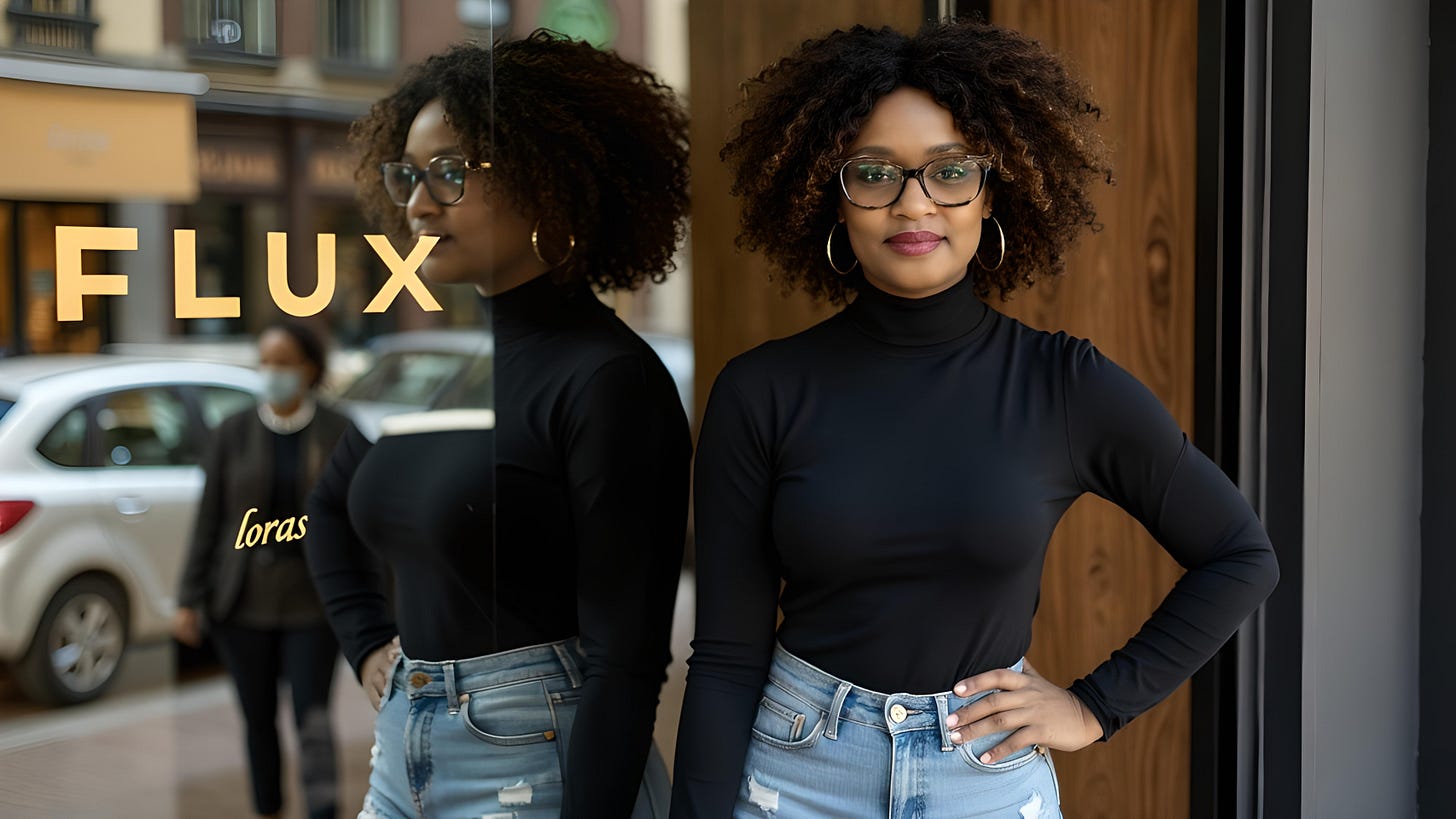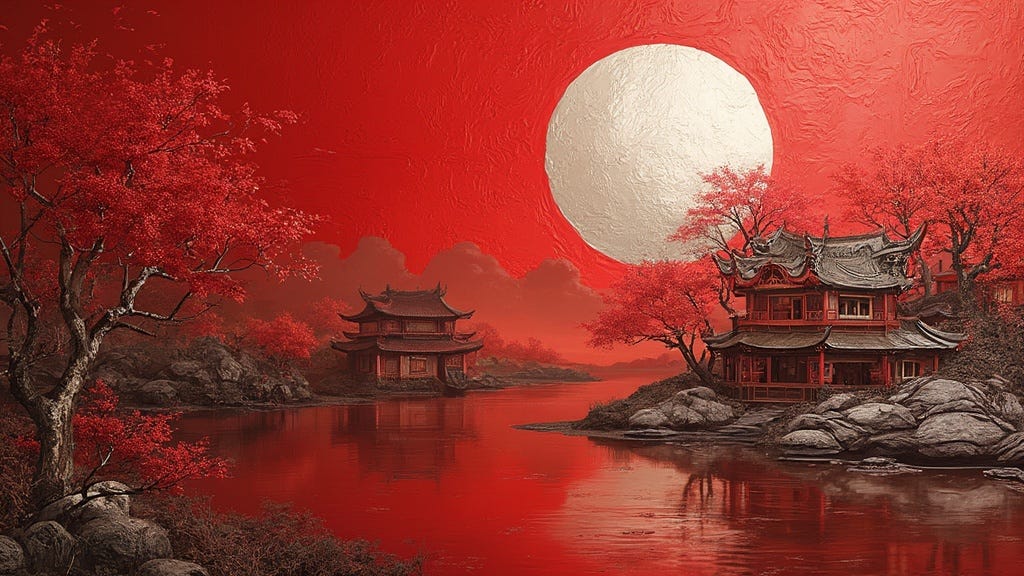Train FLUX on your own images in minutes
Personalize AI images with your photos
Total reading time around 6 minutes.
Welcome to Visually AI!
🔮AI News this Week
How to train a FLUX LoRA on your own images
I’ve trained several FLUX LoRAs with my own images to use as headshots or in different scenes.
There are several platforms where you can train your images, including:
Step 1: Prepare Your Images
Collect 10-20 selfies or photos of yourself, showing different poses and backgrounds. Full-body images or headshots (from the waist up) will work. I used headshots for my process.
Renaming and organizing your images:
Use the same prefix (e.g., "Heather1, Heather2") for easy retrieval.
Put your images in a folder or zip file.
Step 2: Compress Your Files (optional)
For Windows:
Right-click the folder or files and select "Send to" > "Compressed (zipped) folder".
For Mac:
Right-click the folder or files and select "Compress" (the zip file will automatically be named "Archive").
Step 3: Access the FLUX LoRA "Trainer" or "Fine-Tune" Model
Locate the FLUX LoRA model on your chosen platform and follow these steps:
Read the directions or fill in the open fields.
Assign a simple and memorable name to your model/LoRA.
If a "Trigger word" field is available, enter a word from your image file names (e.g., "Heather" if you named your files with that prefix). This word will appear in the prompt field or need to be re-entered each time you generate images.
Step 4: Start Training
Click "Run" or "Start" to begin training.
Wait for the training to complete, as completion times vary depending on the platform (e.g., 5 minutes on Fal, 15 minutes on EverArt, 30 minutes to 1 hour on Astria and Replicate).
Step 5: Generate Customized Images
Once training is complete, click "Run Inference" to start generating images in your personalized style.
Note: Pay attention to optional fields and skip them if you're new to this process.
Here’s a quick overview of the process using the fal-ai/flux-lora-fast-training model on Fal:
Why should you care?
It wasn’t that long ago when we were introduced to the idea of generating avatars from selfies and most were unusable images. Now we can easily get convincing images for a fraction of the cost and time!
Will these pictures replace real photos? Of course not!
But, can you use them on video thumbnails, a flashy ad, or a social media profile picture?
This technology is improving so quickly - FLUX has only been available for 1 month!
Imagine what you’ll be able to do in 2-3 months.
Here’s one of mine, animated by Runway’s Gen-3 Turbo image to video:
📸AI Snapshots
Google researchers created a neural network called GameNGen that can simulate the classic game Doom in real-time without a traditional game engine, generating playable gameplay at 20 frames-per-second using a diffusion model.
Anthropic published Claude's system prompts, marking a significant step towards transparency in AI development, allowing researchers, developers, and the public to better understand how Claude's responses are generated and fostering trust and accountability in the rapidly evolving field of AI.
MiniMax, a Chinese AI startup, has unveiled its first AI video generation model, Video-01, which can generate high-resolution videos from text prompts with a native resolution of 1280x720 pixels at 25 frames per second, offering cinematic camera movements and various styles. Users can try Video-01 for free at hailuoai.com/video after registering with a mobile number, which also works for non-Chinese numbers. (I have not tried this model, yet)
Anthropic announced that Artifacts are now available across all Claude.ai plans, including iOS and Android apps, allowing users to create and view interactive and collaborative work products, such as diagrams, prototypes, and dashboards, and share them with others in a secure environment.
🌠Midjourney sref resource
I launched a new digital product packed with examples for using Midjourney’s style reference codes (sref) to add amazing characteristics to your images.
Midjourney Style Reference Codes w/ Examples
33 - sref codes
396 Downloadable images
132 Prompts (including several I’ve never shared online)
Who is this resource for?
This guide provides visual examples and prompts that inspire and solve creative challenges across these areas:
Marketers looking to create eye-catching visuals for campaigns and social media.
Branding experts who need unique, custom styles to elevate brand identity.
Designers seeking fresh ideas and inspiration for their projects.
Content creators aiming to produce engaging, standout imagery for their platforms.
AI artists exploring new cinematic styles to enhance their portfolios with AI-generated videos.
This is an example of different styles of images I generated with Midjourney sref 13021777660:
As always, I appreciate your support and hope you find it useful :)
🛠️ This Week’s AI Tools
Cursor: AI-powered code editor designed to enhance productivity, featuring tools like Copilot++ for predictive editing and Cmd-K for natural language coding. People have been raving about using Cursor to help build complete apps, with no coding experience. (link)
Mintlify: Documentation platform that helps developers create high-quality, user-friendly documentation with advanced features like API reference docs, analytics, and versioning. (link)
GitHub for Beginners: GitHub’s articles and tutorial videos, with everything you need to know to get started with GitHub (or learn a few tricks you might have missed as an experienced dev!). (link)
HTML to React by Magic Patterns: Browser extension convert snippets of any website into a React component you can export as code or to Figma. (link)
Paperguide: AI Research Assistant, Reference Manager and Writing Assistant that help you understand papers, manage references, annotate/take notes, and supercharge your writing. (link)
Seven24: Capture customer's feedback in real-time and turn it into actionable tasks sorted by importance with a percentage ratio. (link)
AmoiHub: Online prompt organizer that uses tokens to categorize prompts for any generative AI tool or platform. (link)
Face Animator: Upload an image and choose an expression from the app's reaction library to animate. (link)
🎞️ Video Prompt + Workflow
Generate a video with text only, and add sound effects quickly!
Prompt: Waves crashing on a rocky shore at sunset. Low angle shot, dramatic lighting.
I generated the video in Luma AI’s Dream Machine 1.5 with text only and extended once with the Loop feature for a smooth, continuous effect.
Then, I added sound effects with ElevenLabs free Video to Sound Effects app. Upload videos up to 10-seconds long, and choose from one of 4 generated audio previews, then download your video with the sound attached!
🎧IntelliVerse Podcast
You don’t want to miss this conversation with the incredibly talented Eric Solorio, also known as Enigmatic E on YouTube, Instagram, and 𝕏!
We discuss his background in digital sound technology, videography, motion graphics, and virtual effects (VFX). Learn how he gets inspiration and the tools he regularly uses in his workflow.
Listen on Spotify, Apple Podcasts, or watch the full interview on YouTube:
IntelliVerse Episode 5 | Innovative Videography and AI: Eric Solorio’s Creative Path
🖼️ Image Prompts
Prompt: Traditional Vietnamese landscape in son mai technique, silver foil details beneath rich dark red lacquer, silky finish, 3D effect
Change the color, make, and model of the car to your preferences in the prompt below.
Prompt: A person drives a [cherry-red] [Ferrari F8 Tributo] as it accelerates across a vast desert landscape, leaving a cloud of sand in its wake. The car’s sleek lines are accentuated by the harsh desert sunlight, and the distant dunes blur as the car pushes towards the horizon, evoking a sense of raw power and speed
Thanks for reading and have a creative week!







Love it!